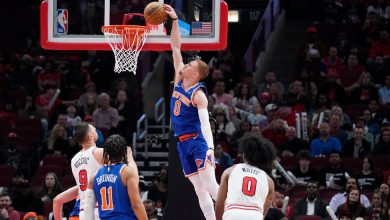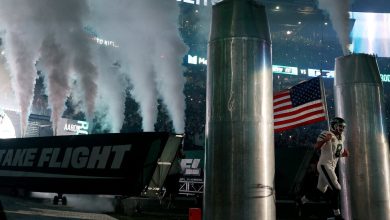As Baseball Fights Over the Short Term, Long-Term Problems Loom

The saddest part about the baseball lockout, which almost certainly will delay the start of spring training and perhaps trim the regular season, is the missed opportunity. Again.
This is quite the pace for Major League Baseball and the players’ union. In the 2020s, the owners and the players have already blown two chances to help grow their sport. Two years ago, they spent the early months of the pandemic squabbling about the economics of a restart, ending up with just 60 games. Now this.
The owners imposed a lockout on Dec. 2 after the expiration of the collective bargaining agreement with the players. The sides have made almost no progress since. Spring training is supposed to start next week, the regular season on March 31. Will they play the full 162 games this season? Bet the under.
To speak with several people directly involved in the negotiations is to come away extremely discouraged. There is nothing to suggest a quick or satisfying resolution. The owners will begin three days of meetings on Tuesday in Orlando, Fla., and must find a way to re-engage a union that rejected the idea of a nonbinding federal mediator last week.
The owners generally like the current system but want more revenue in the form of a garish money grab: expanded playoffs and advertisements on jerseys and helmets. The players will not agree to those changes without significant adjustments to the game’s economics.
The real pity is that finances should be the easy part. The basic goals outlined on Twitter by the Mets’ Max Scherzer, a member of the union’s executive subcommittee, seem reasonable enough: “We want a system where threshold and penalties don’t function as caps, allows younger players to realize more of their market value, makes service time manipulation a thing of the past, and eliminate tanking as a winning strategy.”
Makes sense, right? Who wants to see the Baltimore Orioles use subpar pitchers every night because they know it helps them in the long term to lose aggressively in the short term? Who thinks it is fair that Pete Alonso has earned more by winning two Home Run Derbys than he has by playing three full seasons? Who believes an executive who insists that a top slugging prospect should stay in the minors to work on his defense — not as a way to delay his time to free agency?
These have been glaring problems for years, and it’s hard to fathom that the leadership of the commissioner’s office and the union still cannot find a solution. Yet this lockout has always seemed inevitable because neither side trusts the other or views the sport as a partnership.
If they did, they would have found common-sense answers to the obvious issues and moved on to the hard ones that jeopardize the sport’s long-term health. They should focus on improving the product.
Take the starting pitcher. He’s the guy who draws you to the ballpark, the TV, the gambling app. He’s disappearing, and that’s a major problem. In 2011, there were 39 pitchers who worked 200 innings. A decade later, there were four. The starter is baseball’s most marketable position; fewer dynamic starters make for a less appealing game.
But, hey, at least it lasts longer than ever. Baseball achieved two dubious records last season: longest average game time (3 hours 11 minutes) and most pitchers used per team (4.43 per game, tied with 2020). The average time between balls in play was about four minutes. Teams averaged nearly nine strikeouts per game, while stolen bases (0.46 per game) plunged to a 50-year low.
M.L.B. has experimented with various rule changes in the minors and independent leagues in an effort to improve the pace of play and stimulate action. But Commissioner Rob Manfred has held off from implementing any of those changes — bigger bases, banning the infield shift, enforcement of a pitch clock, and so on — and has been unable to persuade the union to work with his office on those issues.
Again, that highlights the deep mistrust players feel toward ownership, a factor that Manfred has consistently dismissed.
“I think this whole relationship thing gets overplayed and misinterpreted,” he said at the All-Star Game last July, in comments he echoed after implementing the lockout. “You’re in a collective bargaining relationship, you’re going to have points in time where you have disagreements. I don’t think that’s a good thing, but it happens. It just is the way of the world. And agreements get made or not made based on the substance of what’s out there.”
Perhaps the pressure points on the calendar will lead to more substantive moves, by both sides. Canceled exhibitions in March? Missed paychecks in April? And what about those hundreds of free agents remaining on the frozen market? Eventually, they’d like to find a team.
There is so much work remaining and not enough fear of the far-reaching impact of a work stoppage. If history is a guide, the fallout can be toxic.
After the 1981 strike, which cost 713 games, and a brief strike in 1985, owners illegally conspired to collude against free agents. After the 1994 strike, which canceled the World Series, owners staged a farcical spring training with replacement players. When an explosion of home runs finally brought the fans back, nobody had the appetite — or the courage — to confront the obvious specter of steroids.
Consider the damage. World Series ratings have never again been as high as they were in 1980 and now are an annual embarrassment. Per-game attendance reached an all-time high in 1994 (an average of 31,256 per game), and took 12 years to return to that level. Now it is falling again: In 2019, the last season with full capacity, the average crowd was 28,203, the fourth consecutive year it had dropped.
Baseball has been propped up financially by regional sports networks, but that model is severely threatened as more households alter their viewing habits and drop cable. The most pressing issue for the sport’s leaders should be finding a new broadcast paradigm and a better game to pitch to it.
There is so much to celebrate in baseball, so many more fans who should be entranced by spellbinding players competing in the greatest sport ever devised. Instead, the league and the players are deadlocked on the easy stuff and hastening their own decline.



